Discover 11 hidden attractions, cool sights, and unusual things to do in Caernarfon (United Kingdom). Don't miss out on these must-see attractions: Caernarfon Castle, Castles and Town Walls of King Edward in Gwynedd, and Segontium. Also, be sure to include Aber Swing Bridge in your itinerary.
Below, you can find the list of the most amazing places you should visit in Caernarfon (Wales).
Table of Contents
Caernarfon Castle
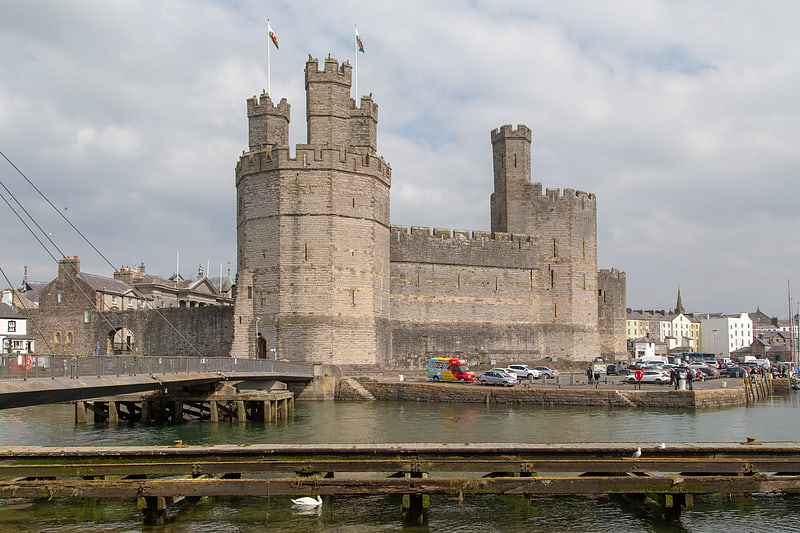
Dramatic, 13th-century waterfront castle. Caernarfon Castle – often anglicised as Carnarvon Castle or Caernarvon Castle – is a medieval fortress in Caernarfon, Gwynedd, north-west Wales cared for by Cadw, the Welsh Government's historic environment service. It was a motte-and-bailey castle from the late 11th century until 1283 when King Edward I of England began to replace it with the current stone structure. The Edwardian town and castle acted as the administrative centre of north Wales, and as a result the defences were built on a grand scale. There was a deliberate link with Caernarfon's Roman past, and the Roman fort of Segontium is nearby.
While the castle was under construction, town walls were built around Caernarfon. The work cost between £20,000 and £25,000 from the start until the work ended in 1330. Although the castle appears mostly complete from the outside, the interior buildings no longer survive and many of the building plans were never finished. The town and castle were sacked in 1294 when Madog ap Llywelyn led a rebellion against the English. Caernarfon was recaptured the following year. During the Glyndŵr Rising of 1400–1415, the castle was besieged. When the Tudor dynasty ascended to the English throne in 1485, tensions between the Welsh and English began to diminish and castles were considered less important. As a result, Caernarfon Castle was allowed to fall into a state of disrepair. Despite its dilapidated condition, during the English Civil War Caernarfon Castle was held by Royalists, and was besieged three times by Parliamentarian forces. This was the last time the castle was used in war. The castle was neglected until the 19th century when the state funded repairs. The castle was used for the investiture of the Prince of Wales in 1911 and again in 1969. It is part of the World Heritage Site "Castles and Town Walls of King Edward in Gwynedd".[1]
Address: Castle Ditch, LL55 2AY Caernarfon
Castles and Town Walls of King Edward in Gwynedd

The Castles and Town Walls of King Edward in Gwynedd is a UNESCO-designated World Heritage Site located in Gwynedd, Wales. It includes the castles of Beaumaris and Harlech and the castles and town walls of Caernarfon and Conwy. UNESCO considers the sites to be the "finest examples of late 13th century and early 14th century military architecture in Europe".
The fortifications are part of the Ring of Iron built by Edward I after his invasion of North Wales in 1282. Edward defeated the local Welsh princes in a major campaign and set about permanently colonising the area. He created new fortified towns, protected by castles, in which English immigrants could settle and administer the territories. The project was hugely expensive and stretched royal resources to the limit. Fresh Welsh revolts followed in 1294 under the leadership of Madog ap Llywelyn. Conwy and Harlech were kept supplied by sea and held out against the attack, but Caernarfon, still only partially completed, was stormed. In the aftermath, Edward reinvigorated the building programme and ordered the commencement of work at Beaumaris. Edward's wars in Scotland began to consume royal funding, however, and work soon slowed once again. Building work on all the fortifications had ceased by 1330, without Caernarfon and Beaumaris having been fully completed.
The fortifications played an important part in the conflicts in North Wales over the coming centuries. They were involved in the Glyndŵr Rising of the early 15th century and the Wars of the Roses in the late 15th century. Despite declining in military significance following the succession of the Tudor dynasty to the throne in 1485, they were pressed back into service during the English Civil War in the 17th century. In the aftermath of the conflict, Parliament ordered the slighting, or deliberate destruction, of parts of Conwy and Harlech, but the threat of a pro-Royalist invasion from Scotland ensured that Caernarfon and Beaumaris remained intact. By the end of the 17th century, however, the castles were ruinous. They became popular with visiting artists during the late 18th and early 19th centuries, and visitor numbers increased as access to the region improved during the Victorian period. The British state invested heavily in the castles and town walls during the 20th century, restoring many of their medieval features. In 1986 the sites were collectively declared to be a World Heritage Site, as outstanding examples of fortifications and military architecture built in the 13th century, and are now operated as tourist attractions by the Welsh heritage agency Cadw.
For much of the 20th century, the castles and walls were considered primarily from a military perspective. Their use of concentric defences, barbicans and substantial gatehouses led D. J. Cathcart King to describe them as the "zenith of English castle-building", and Sidney Toy to assess them as "some of the most powerful castles of any age or country". In the late 20th and 21st centuries, historians such as Michael Prestwich and Abigail Wheatley also highlighted the sites' roles as palaces and symbols of royal power. The location of castles such as Caernarfon and Conwy were chosen for their political significance as well as military functions, being built on top of sites belonging to the Welsh princes. The castles incorporated luxury apartments and gardens, with the intention of supporting large royal courts in splendour. Caernarfon's castle and town walls incorporated expensive stonework, probably intended to evoke images of Arthurian or Roman imperial power in order to bolster Edward's personal prestige. The precise role of the royal architect James of St George in the construction projects, and the influence of his native County of Savoy on the designs, also continues to be debated by academics. However the primary sources do indicate he played a key role, describing him as “Magistro Jacobo de sancto Georgio, Magistro operacionum Regis in Wallia” or “Master James of Saint George, Master of the King’s Works in Wales.”[2]
Address: Greengate Street, LL55 Caernarfon
Segontium
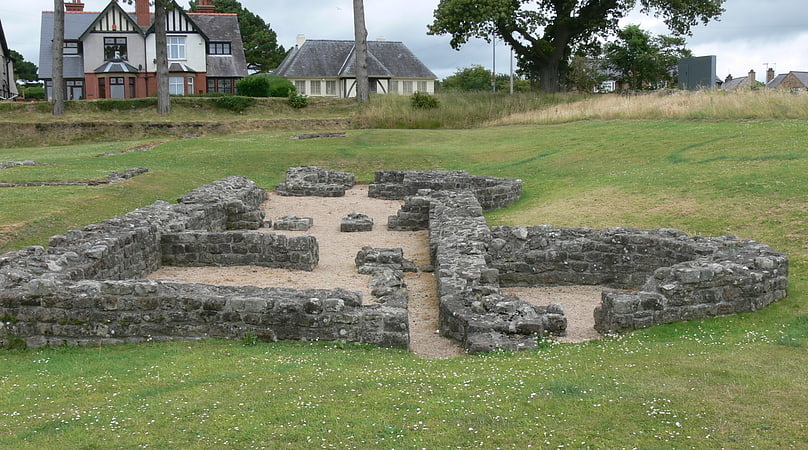
Preserved ruins of a Roman fort. Segontium is a Roman fort on the outskirts of Caernarfon in Gwynedd, North Wales. The fort, which survived until the end of the Roman occupation of Britain, was garrisoned by Roman auxiliaries from present-day Belgium and Germany. It was the most important military base and administrative centre in this part of Britain.[3]
Aber Swing Bridge
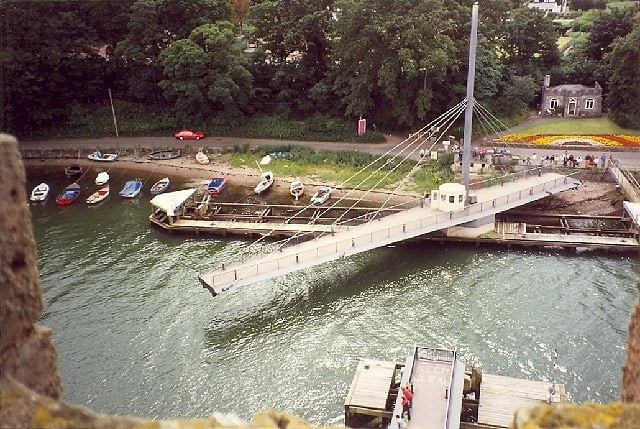
The Aber Swing Bridge, also known as the Pont yr Aber and Caernarfon swing bridge, is a pedestrian swing bridge in Gwynedd, Wales. This footbridge crosses over the Afon Seiont from the foreshore to the Watergate entrance in the centre of Caernarfon near Caernarfon Castle. It was built in 1970, is made of concrete and steel, and is powered with electricity.
This bridge replaces another swing bridge which opened on March 1, 1900 (St. David's Day). That first bridge was built to replace the ferry. It was demolished in 1969. For a short time after that, there was a bailey bridge.[4]
Royal Welch Fusiliers Museum
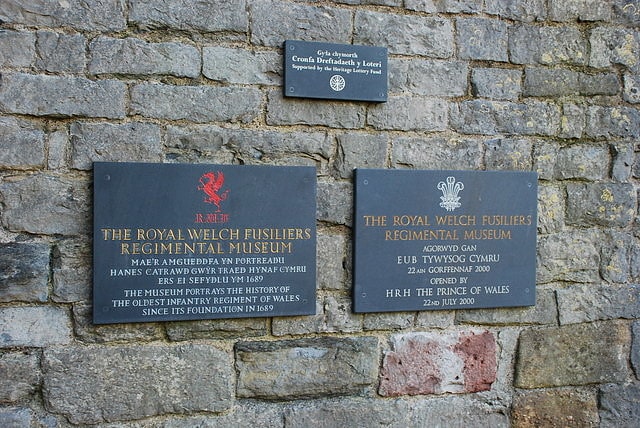
Museum in Caernarfon, Wales. The Royal Welch Fusiliers Museum is a museum dedicated to the history of the Royal Welch Fusiliers, a historic regiment of the British Army. The museum is located within Caernarfon Castle in Caernarfon, Gwynedd, North Wales. Admission is included with entry to the castle.[5]
Address: 7 Castle Ditch, LL55 2AY Caernarfon
Gypsy Wood Park
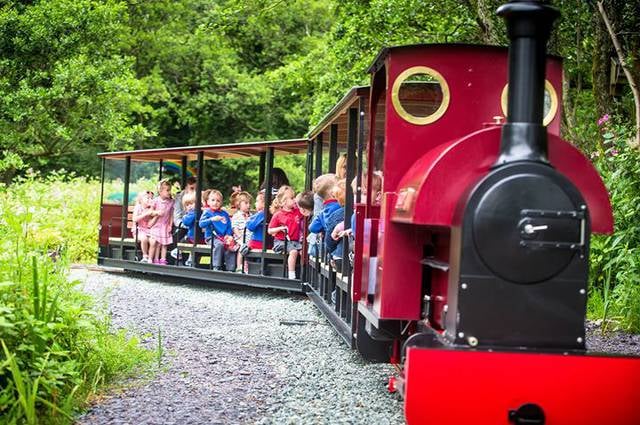
Park, Relax in park
Address: Tyddyn Newborough, LL55 2YA Caernarfon
Porth yr Aur
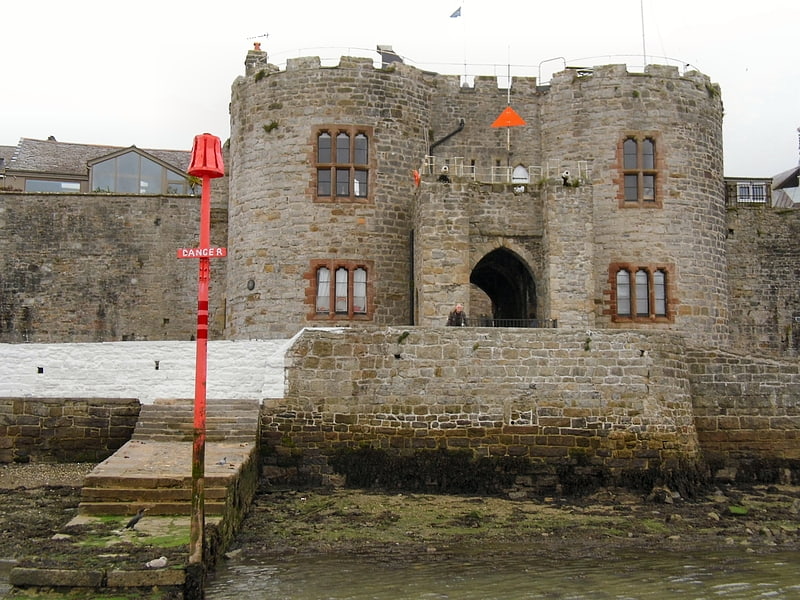
Porth yr Aur is a Grade I listed 13th-century fortification in Caernarfon which forms part of Caernarfon Castle's medieval defences. Originally known as the West gate it was the main seaward entrance to the walled town. The building has been the home of the Royal Welsh Yacht Club since 1854. Porth yr Aur forms part of the Castles and Town Walls of King Edward in Gwynedd UNESCO world heritage site.
Construction began in 1283 at the same time as Caernarfon castle, both integral components of the city walls, and was completed by 1292.[6]
Council Offices

Building in Caernarfon, Wales. The Council Offices is a municipal facility at Shirehall Street in Caernarfon, Wales. The structure, which is the headquarters of Gwynedd Council, is a Grade II listed building.[7]
Caernarfon town walls
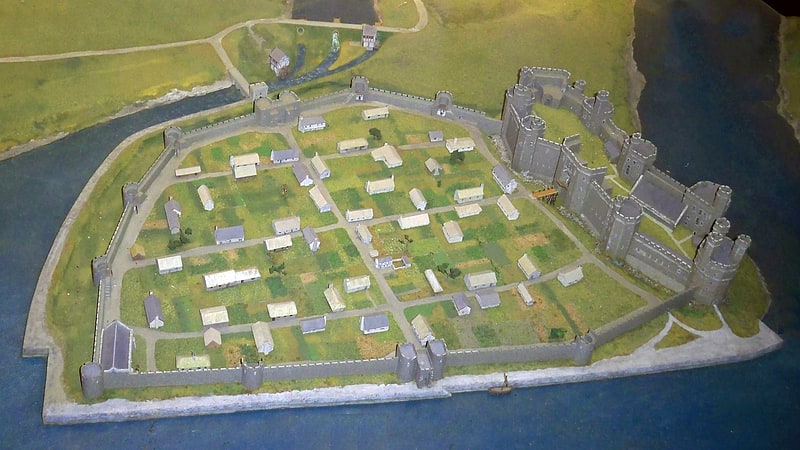
Caernarfon's town walls are a medieval defensive structure around the town of Caernarfon in North Wales. The walls were constructed between 1283 and 1292 after the foundation of Caernarfon by Edward I, alongside the adjacent castle. The walls are 734 m long and include eight towers and two medieval gatehouses. The project was completed using large numbers of labourers brought in from England; the cost of building the walls came to around £3,500, a large sum for the period. The walls were significantly damaged during the rebellion of Madog ap Llywelyn in 1294, and had to be repaired at considerable expense. Political changes in the 16th century reduced the need to maintain such defences around the town. Today the walls form part of the UNESCO world heritage site administered by Cadw. Archaeologists Oliver Creighton and Robert Higham describe the defences as "a remarkably intact walled circuit".[8]
Welsh Highland Railway
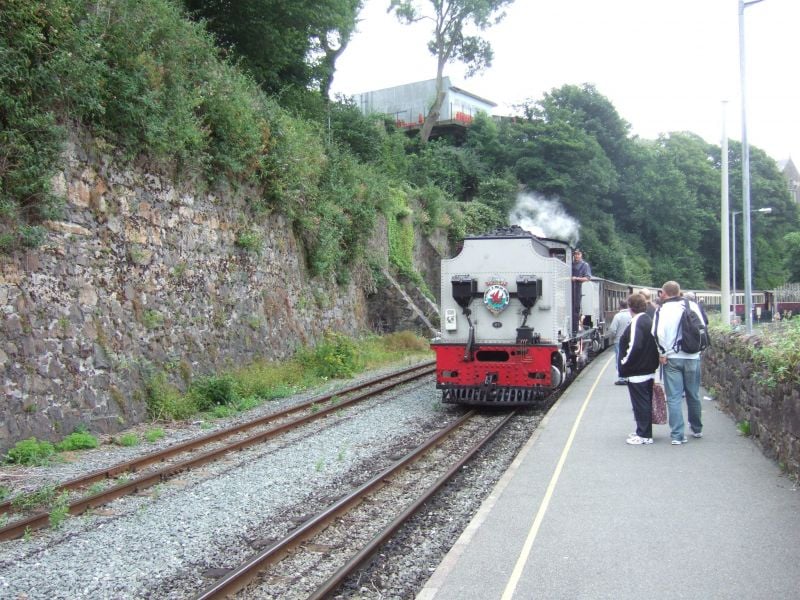
Address: St Helens Road, Caernarfon, Caernarfon
Caernarfon Barracks
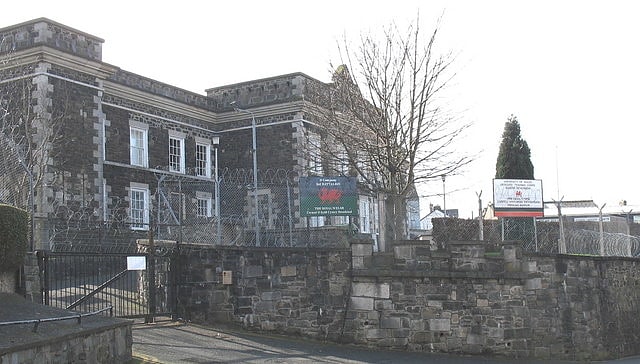
Caernarfon Barracks is a military installation in Caernarfon, Wales.[9]